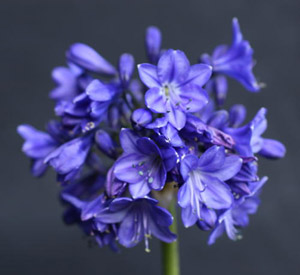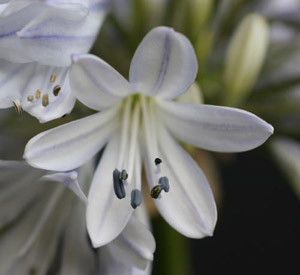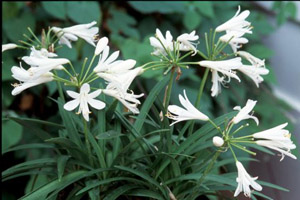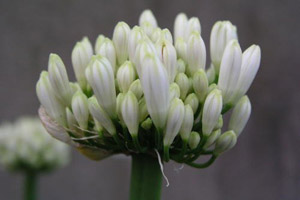|
Agapanthus, by
Ian Scroggy
|
Agapanthus
originate from South Africa,
first discovered by Dutch
explorers in the seventeenth
century. Agapanthus
africanus was first introduced
to Europe in 1679. Their native
habitat is from the Cape
Province
in South Africa where the plants
are dry in the winter time with
rain only in the summer, but the
evergreen varieties
were found in areas that
received rain all year round. As
a general rule of thumb the
deciduous varieties are much
hardier, especially the newer
varieties that have been bred
locally in Northern Ireland and
in Cornwall. |
|
 |
|
A.
'Patent Blue' |
|
 |
|
A.
'Delft' |
|
| The
Evergreen varieties require more
shelter in the winter months as
they dislike excess rain and
frost, although with
"global warming" I am
finding more of the tender varieties
are surviving better outdoors
especially if pot grown - and
place your pots on a south
facing aspect next to a hedge or
tree for added protection as
these will act as a
microclimate; the more pots you
put together the better. A
usual tip is to fill some pots
with peat or soil and place them
around the plants you want to
protect; this acts as natural
insulation of course you can use
manmade materials such as
hessian or frost fleece.
In
Victorian times they used to
place the Agapanthus in their
pots into a much larger clay pot
filled with straw and kept the
pots in a cold frame. |
|
| |
|
|
Agapanthus come mostly in varying
shades of violet-blue through to dark
purple and royal blue, even touching
onto "black" with also pure
white flowers. The flowers are
mostly produced on long stems with a
panicle of florets massing together to
make a flowerhead. Each individual
floret can be funnel, trumpet or
salver-shaped (flattened back petals)
with loose florets or compact
florets. Some of the more dwarf
varieties include Liliput, Thumbelina,
Snowdrop, Snow Princess, Summer Snow,
Beeches Dwarf, Dainty Lady, Kobalt,
Midnight Blue, Silver Baby and Peter
Pan. There are more but these are some
of the better varieties. |
|
 |
|
A. 'Thumbelina' |
|
 |
|
A.
'Snow Cloud' |
|
|
|
|
|
|
|
|
